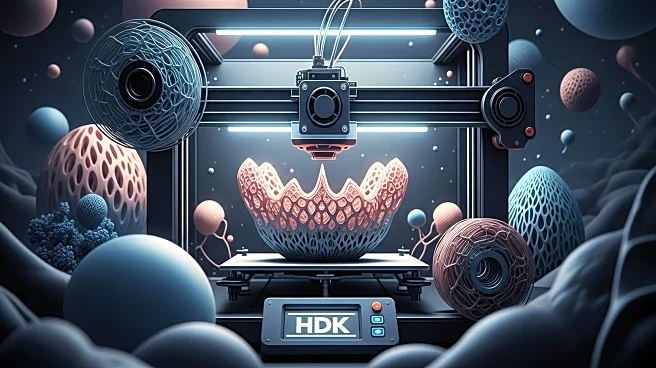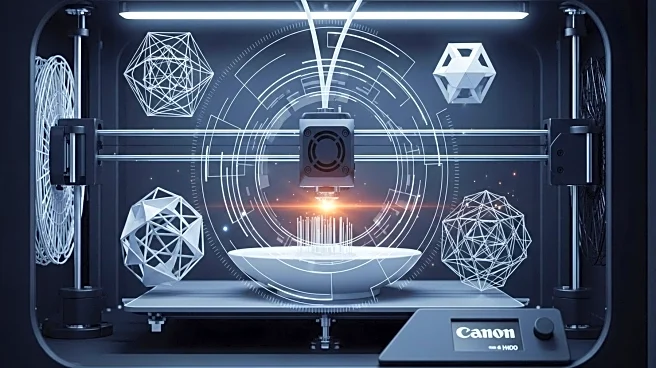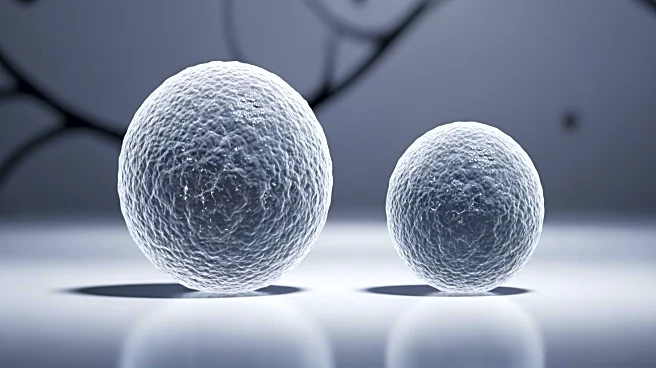What's Happening?
A new study published in Nature introduces an adaptive 3D printing method capable of forming complex structures that adapt to their environment. Developed by Riccardo Levato and colleagues, the method, known as GRACE (generative, adaptive, context-aware 3D printing), utilizes light-based imaging and computer vision to map and respond to the 3D environment within the printer. This approach allows for the creation of intricate parts on the centimeter scale in seconds, including multi-material structures. The GRACE device combines volumetric printing with light-sheet microscopy, enabling rapid and precise fabrication of complex designs.
Why It's Important?
The introduction of adaptive 3D printing methods represents a significant advancement in manufacturing technology. By allowing structures to adapt to their environment during printing, this method enhances the precision and versatility of 3D printing, potentially revolutionizing industries such as healthcare, aerospace, and automotive manufacturing. The ability to rapidly produce complex, multi-material structures could lead to innovations in product design and development, reducing production times and costs. This technology also supports the growing trend towards personalized manufacturing, where products can be tailored to specific needs and conditions.











